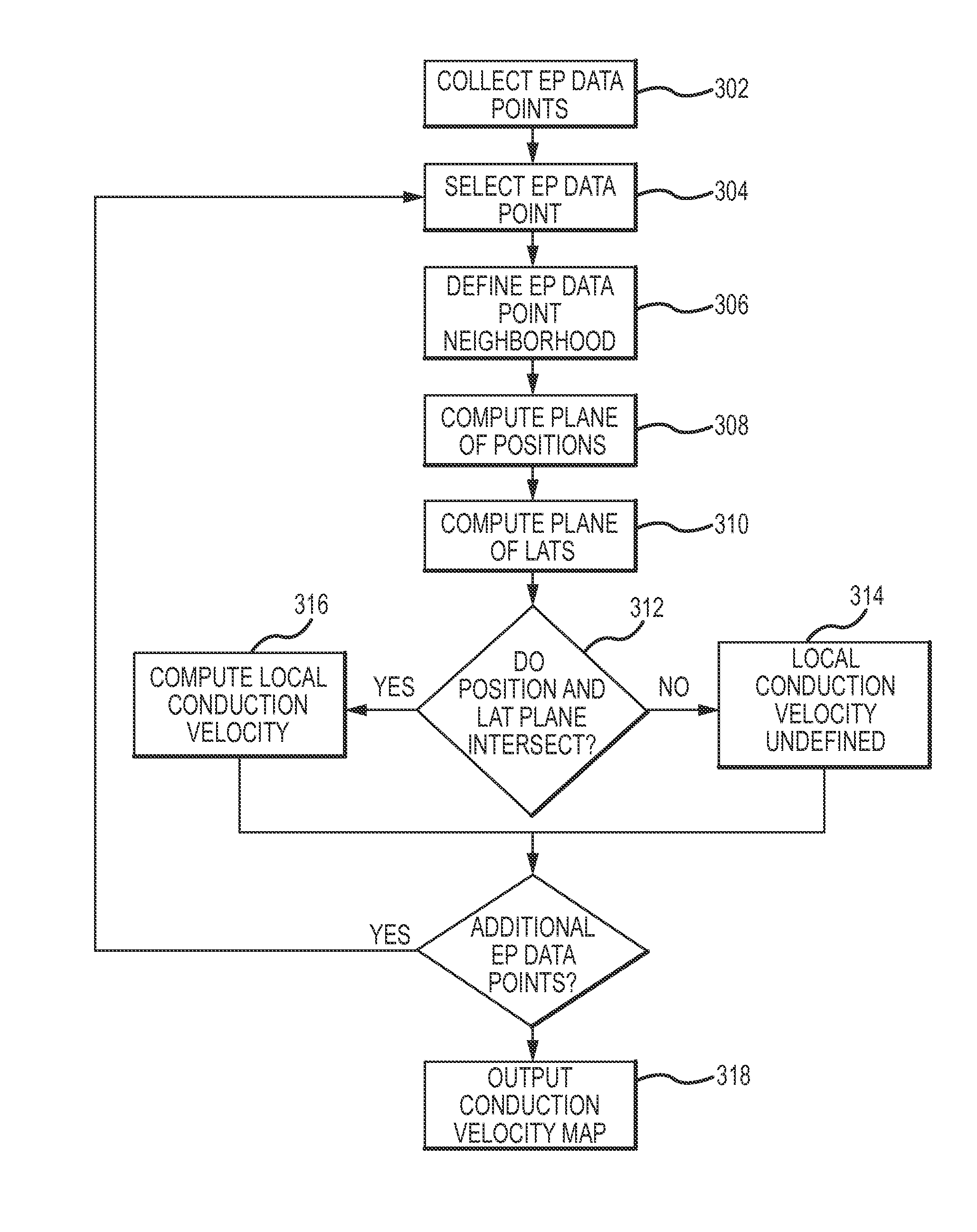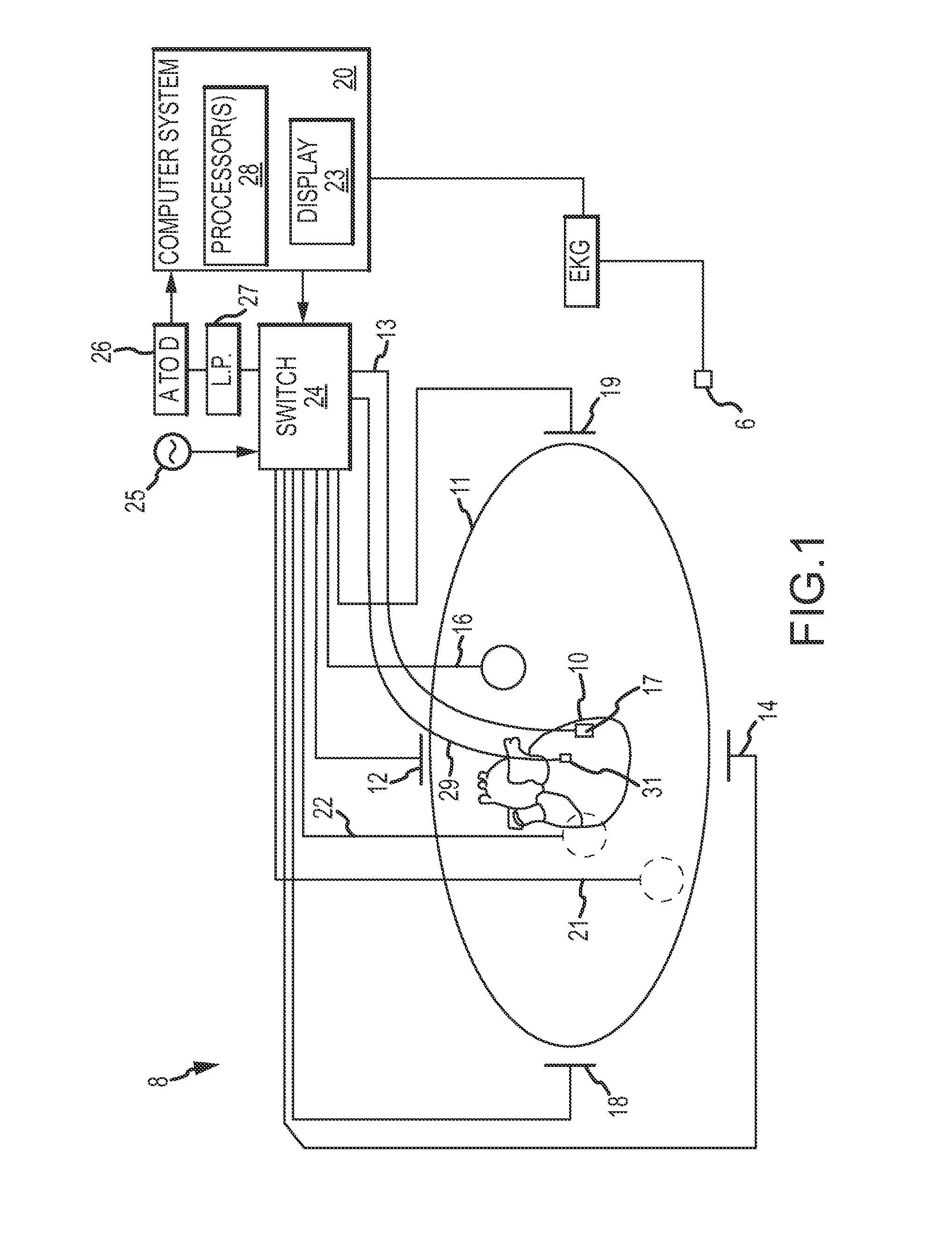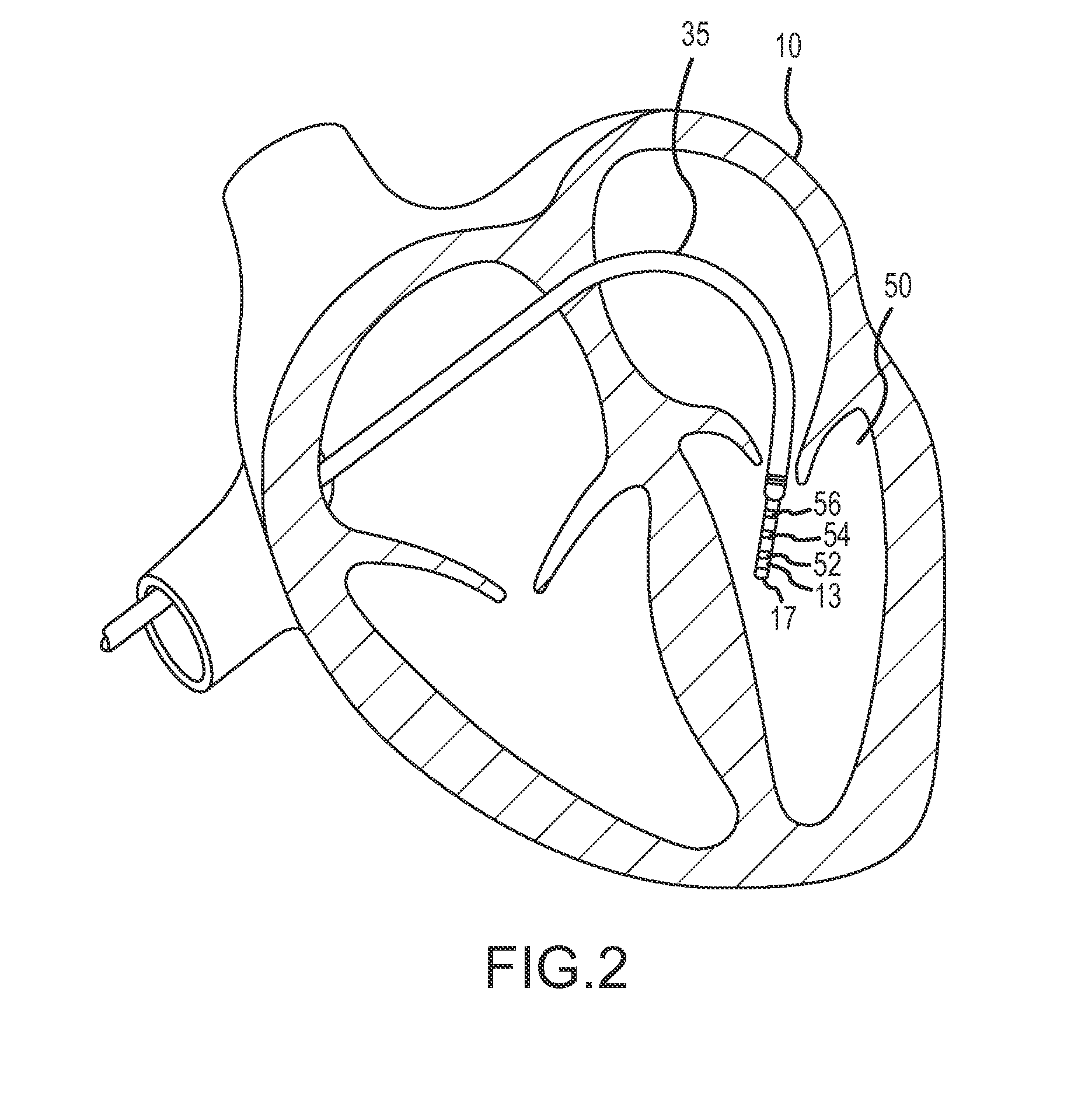Methods and systems for mapping local conduction velocity
a technology of conduction velocity and local conduction velocity, applied in the field of electrophysiological mapping, can solve the problem that isochronal lats maps are typically limited to cardiac-triggered maps
- Summary
- Abstract
- Description
- Claims
- Application Information
AI Technical Summary
Problems solved by technology
Method used
Image
Examples
Embodiment Construction
[0020]The present disclosure provides methods, apparatuses, and systems for the creation of electrophysiology maps (e.g., electrocardiographic maps) that provide information regarding the local conduction velocity of a cardiac activation wavefront. Advantageously, because local conduction velocity is reference-independent, the teachings herein can be applied to compute local conduction velocity for both regular activations (including both sinus rhythm and regular cardiac arrhythmias) and irregular activations (such as irregular arrhythmias, including atrial fibrillation), where a stable reference may not be available.
[0021]FIG. 1 shows a schematic diagram of an electrophysiology system 8 for conducting cardiac electrophysiology studies by navigating a cardiac catheter and measuring electrical activity occurring in a heart 10 of a patient 11 and three-dimensionally mapping the electrical activity and / or information related to or representative of the electrical activity so measured. ...
PUM
 Login to View More
Login to View More Abstract
Description
Claims
Application Information
 Login to View More
Login to View More - R&D
- Intellectual Property
- Life Sciences
- Materials
- Tech Scout
- Unparalleled Data Quality
- Higher Quality Content
- 60% Fewer Hallucinations
Browse by: Latest US Patents, China's latest patents, Technical Efficacy Thesaurus, Application Domain, Technology Topic, Popular Technical Reports.
© 2025 PatSnap. All rights reserved.Legal|Privacy policy|Modern Slavery Act Transparency Statement|Sitemap|About US| Contact US: help@patsnap.com



